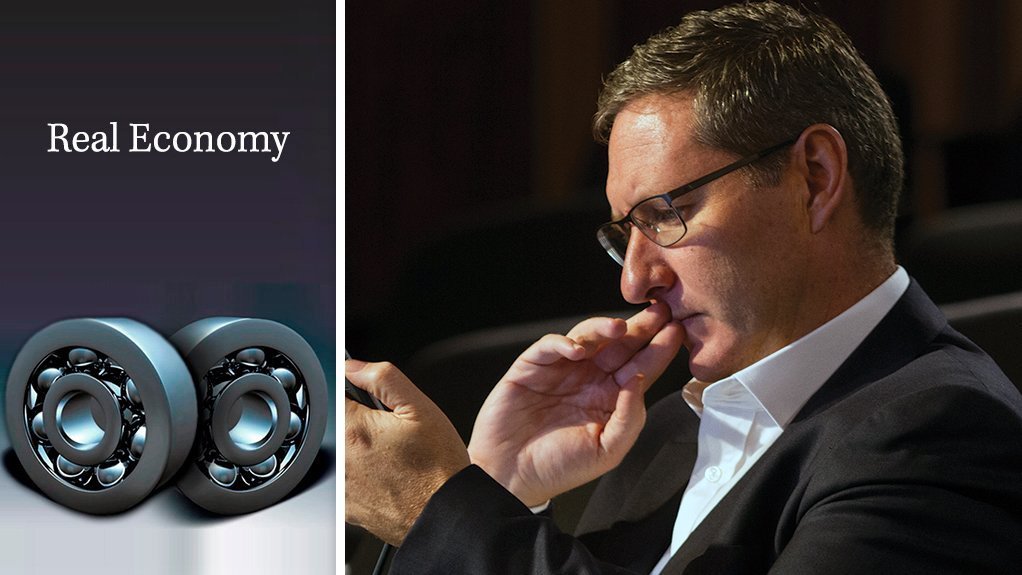Time to get real about Eskom coal fleet
Opinion may be divided on the appointment of Andre de Ruyter as Eskom’s new CEO, but on one point it’s overwhelmingly united: there will be no honeymoon period.
The attitude of citizens towards State-owned companies, generally, and Eskom, in particular, has hardened. Nobody wants to hear any more excuses for poor service delivery and/or subpar project execution. Fewer still are willing to countenance another round of bail-outs, even amid the too-big-to-fail warnings. Quite unfairly, a false moral equivalence is also increasingly being drawn between the current boards and executive teams and those previous boards and executive teams that abused their positions to enrich themselves.
Given this background, as well as the massive financial and operational risks that currently define Eskom, De Ruyter will have to hit the ground running on January 15, when he will be expected to demonstrate that he not only understands the problems but also has a roadmap for remedying them.
Eskom’s financial crisis is the immediate burning platform. The utility’s R450-billion-plus debt burden is, in the words of the National Treasury, “well beyond what it can afford to hold without government support”.
Eskom is also not likely to receive any respite in the form of higher sales, partly because of the weak economic outlook, but also because its undermaintained coal fleet is in no position to respond to any upside that may present itself. Indeed, if there were one real difference De Ruyter could make immediately, it would be to inject a greater sense of realism about the performance of the coal fleet and the prospects for its recovery.
Although the Integrated Resource Plan 2019 (IRP 2019) assumes a lower energy availability factor (EAF) for the historic coal fleet than was the case in either the IRP 2010 or the draft IRP 2018, the 67% to 76% assumption remains optimistic. In reality, the EAF has been declining steadily and is tracking below 68% year-to-date. While the IRP 2019 assumes a recovery to 75.5% over the coming four years, there is a real risk that such a recovery will not materialise. If it doesn’t, system adequacy will be jeopardised, with the Medium-Term System Adequacy Outlook 2019 indicating that the system is adequate to 2024 at an EAF of above 72%. The document warns, however, that excessive unplanned plant failures and/or an increase in electricity growth would affect the adequacy outlook.
The sooner De Ruyter takes a more realistic view of the coal fleet and communicates this to Ministers Pravin Gordhan and Gwede Mantashe, the sooner a positive chain reaction will be set in motion to improve security of supply: the Ministerial determinations needed to get procurement moving again after a five-year stall will be issued; much-needed capacity will be built; and the soon-to-be-unbundled transmission company will be given the resources it requires to connect the some 10 000 MW of mostly renewables capacity that must be added by 2025, largely to close the gaps created by the lower EAF, the derating of the new Medupi and Kusile units and the decommissioning of the older power stations.
Article Enquiry
Email Article
Save Article
Feedback
To advertise email advertising@creamermedia.co.za or click here
Press Office
Announcements
What's On
Subscribe to improve your user experience...
Option 1 (equivalent of R125 a month):
Receive a weekly copy of Creamer Media's Engineering News & Mining Weekly magazine
(print copy for those in South Africa and e-magazine for those outside of South Africa)
Receive daily email newsletters
Access to full search results
Access archive of magazine back copies
Access to Projects in Progress
Access to ONE Research Report of your choice in PDF format
Option 2 (equivalent of R375 a month):
All benefits from Option 1
PLUS
Access to Creamer Media's Research Channel Africa for ALL Research Reports, in PDF format, on various industrial and mining sectors
including Electricity; Water; Energy Transition; Hydrogen; Roads, Rail and Ports; Coal; Gold; Platinum; Battery Metals; etc.
Already a subscriber?
Forgotten your password?
Receive weekly copy of Creamer Media's Engineering News & Mining Weekly magazine (print copy for those in South Africa and e-magazine for those outside of South Africa)
➕
Recieve daily email newsletters
➕
Access to full search results
➕
Access archive of magazine back copies
➕
Access to Projects in Progress
➕
Access to ONE Research Report of your choice in PDF format
RESEARCH CHANNEL AFRICA
R4500 (equivalent of R375 a month)
SUBSCRIBEAll benefits from Option 1
➕
Access to Creamer Media's Research Channel Africa for ALL Research Reports on various industrial and mining sectors, in PDF format, including on:
Electricity
➕
Water
➕
Energy Transition
➕
Hydrogen
➕
Roads, Rail and Ports
➕
Coal
➕
Gold
➕
Platinum
➕
Battery Metals
➕
etc.
Receive all benefits from Option 1 or Option 2 delivered to numerous people at your company
➕
Multiple User names and Passwords for simultaneous log-ins
➕
Intranet integration access to all in your organisation




















